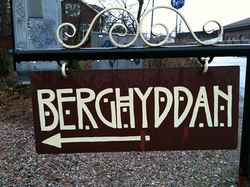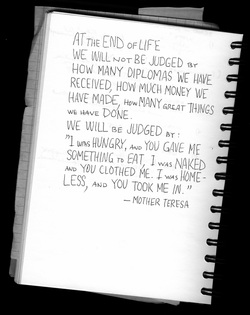|
What a wonderful full moon!
Looking at that gracious full moon transferred my thoughts way back to 1977. That's when astronaut James B. Irwin visited my father in Helsinki. He came to speak at our church where my father was a pastor. I had the privilege of serving as colonel Irwin's chauffeur during some of his stay. We took him around Helsinki to see our beautiful city. James Irwin had just written a book "To the moon and beyond", and the book was published in Finnish by the time of his visit. "Jim" Irwin impressed me with his interesting life story: graduating from Naval Academy at the age of 21 and becoming an Air Force test pilot at the age of 31, how he had later crashed a fighter jet and the doctor had told him that he would never fly again. Ten years later he was on his way to the moon as the lunar module pilot of Apollo 15. Incredible! But this was not the thing that set him apart from other great aviators. Indeed, it was his faith in God that gave this man a special character and also made his journey to the moon so impressing and full of meaning. When Jim Irwin was launched into space with the Apollo mission, he took a poem with him and eventually carried it to the moon with him. The poem was written by John Gillespie Magee, Jr. and it's called "High Flight". This beautiful poem reflects something of colonel Irwin's faith, too. Eventually the name of this poem became the name of the organization that James Irwin founded after he retired from NASA. High Flight Foundation exists to this day and serves as "Global Goodwill Ambassadors facilitating aid and delivering a message of hope and peace to the nations." So, next time you look at the moon, write another poem. Good luck to you all!
2 Comments
 The other day I received a good old postal package from Berlin, Germany. I wasn't expecting any mail, so I wondered what it might contain. To my surprise inside the package I found a beautiful book. At looking the cover it was quite obvious that the book dealt with typography. The book "Karbid. BERLIN — de la lettre peinte au caractère typographique" was written by a team of typographers, namely Verena Gerlach, Fritz Krögel, Sébastien Morlighem and Fred Smeijers. I was delighted, but as the package contained no dispatch note, I kept wondering why I had received the book. Because I knew the sender was FontFont Berlin, I tried to reason that maybe I was such a good customer that they wanted to mail me the book as a free copy. However, that was not the case. Today it dawned to me that I had sent an entry for a contest that FontFont announced. They had asked customers to send a photo of an inspiring typographic example of urban typography, signs or some other cityscape. I had enclosed a photo (the one you see at the top of this blog post). I took the photo some years ago here in Helsinki near Annala (Anneberg) gardens. The author of "Karbid" book Verena Gerlach had used her judgement and selected 15 photos that most inspired her. And mine was among them. That was the reason FontFont had sent the book. But back to the book I received. As much as it is a reading piece it is also a clever advertisement for a new font FF Karbid Pro. Verena tells about the birth of this book: « Towards the middle of the 1980s, Verena Gerlach, a Berlin-born adolescent, regularly crossed the control post on Friedrichstraße to visit a friend living in the east of the city. She started to note and to memorise the inscriptions, shop signs and murals that decorated the facades of buildings and shops, painted in most part between the 1900s and 1940s, and left to decay. After the fall of the wall, Verena, now a student in visual communication at the Kunsthochschule Berlin Weißensee, deepened her exploration of the areas in east Berlin, more specifically Prenzlauer Berg and Mitte. Here she gathered photographs between 1991 and 1998, documenting a large number of shop signs and facades. She returned in 2005, endeavouring to review her initial viewpoints, and could not fail to notice the effects of reunification: this unique epigraphic heritage had almost completely disappeared, covered by the contemporary dealbatores of capitalism.« The featured typeface FF Karbid Pro was originally inspired by these storefront letterings from the 1920s and 1930s. Using it as a starting point, I then disseminate its spirit into a family of well-behaved but energetic text faces. FF Karbid is the result of my final diploma work in 1998. Congratulations Verena! Keep up the good  Every now and then it's a good idea to sit back and to think of what life really is about. We as individuals are born here alone—well, some come out as twins or triplets. But even twins have an inner quality to their being which is apart from everything else. At some point we may start wondering: Just why are we here? It's a good question. One guy tried to answer this question by reminding that we are here because our parents allowed it to happen. But it's not really the answer. It does tell HOW we are here, but the question WHY we are here remains unanswered. People of all cultures and generations have asked the same question. Yet, it seems to bug us even today. If the answer is that we are here by a mere chance, it leaves us without a purpose—or it gives us an perplexed view of our life's priorities. We can do anything we like with our lives and still it doesn't make any sense. However, if the answer is that we are here because someone purposefully planned it and designed our life, then we are on a different track. The Bible has something amazing to say on this subject. In Genesis 1:27 it says: "God created man in His own image, in the image of God He created him; male and female He created them". The Bible further tells that God made man to His likeness by forming man from the dust of the earth and then breathed into his nostrils the breath of life. What an amazing and intimate picture of man’s creation. It's like God giving CPR to a collapsed patient except that the patient had never been alive before. I wish that I could give CPR to a collapsed person and not walk by. It seems to me that God didn't want the first man to lay down on the ground but rather to be a living. But what about the purpose of all this? The Bible is an interesting book in many respect as it does have a logic. Remember the Pharaoh the reigned in Egypt at the same time when Moses led the Israelis out of the country? Apostle Paul reminds us of how God had a plan even for this Pharaoh: "For this very purpose I raised you up, to demonstrate my power in you, and that my name might be proclaimed throughout the whole earth." (Romans 9:17). So, could it be that the sovereign God really has a plan for every individual? I believe it is possible. At least the Bible continues: "For those whom He foreknew, He also predestined to become conformed to the image of His Son, so that He would be the firstborn among many brethren…" (Romans 8:29). Jesus, the son of God, said: "I came that they may have life, and have it more abundantly" (John 10:10). If this were true, what would it mean to us? Could it mean that by believing in Jesus we might be destined to life with a purpose? The Bible is very open about this and doesn't leave us out in the cold. "For if we have become united with Him in the likeness of His death, certainly we shall also be in the likeness of His resurrection, knowing this, that our old self was crucified with Him, in order that our body of sin might be done away with, so that we would no longer be slaves to sin; for he who has died is freed from sin…" (Romans 6:6). As I try to grasp the greatness of this, it gives me an incredible hope. If this is true, then I have a view, a real vista. My life is with an abundant meaning and it would eventually amount to something eternal. What a joy! :-) |
AuthorEero Antturi is a Finnish graphic designer with more than 30 years of experience in publishing business. ArchivesCategories |
|
© Copyright 2014 by Antturi Design Oy, Finland. All photographs and design samples copyright of their respective owners. All rights reserved. All unauthorized use prohibited.
This website template by Weebly.com |


 RSS Feed
RSS Feed